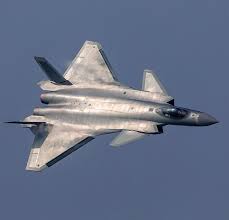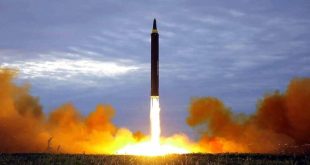New Delhi: China is the third largest country in the world. It is the first country in the world which shares its borders with the most number of countries. It has some kind of border dispute going on with all these countries. India is also not untouched by this. There is a border dispute between China and India in Eastern Ladakh, Sikkim and Arunachal. China also shows many areas of these states of India in its map. It also claims Sikkim. Now China has deployed its most advanced J-20 (J-20 fighter) stealth fighter jets about 150 km away from Sikkim. This has been revealed by new satellite images.
It can be seen in the new high resolution satellite images that China deployed J-20 fighter jets at Shigatse airbase in Tibet on 27 May. This Chinese airbase is near Sikkim, from where India has deployed 16 Rafale fighter jets in West Bengal, a short distance away. Their job is to protect the Himalayan border over eastern India. China had earlier deployed J-20s there amid tensions with Taiwan. Now it has done the same on the Indian border. To deal with these antics of China, India has deployed Rafale jets in West Bengal. On the other hand, S-400 air defense system has also been set up near the Tibet border.
‘Dragon’s’ nefarious move! Jets deployed 150 KM away from Sikkim, revealed by satellite images
At present, India is operating two Rafale squadrons with a total of 36 fighter jets. It is believed that China has already built about 250 J-20 stealth fighter jets. Recently, China deployed J-20 on its eastern border. Its main purpose was to ensure the defense of the Pacific coast. While the deployment of at least 7 J-20 fighter jets in Shigatse is very important for India.
China has deployed these fighter jets at the airport used for army and civil purposes. This airport serves Shigatse, the second largest city in Tibet. Situated at an altitude of 12,408 feet, this airport is also among the highest airports in the world. The deployment of J-20 shows the ability of the high altitude Tibetan airport to operate even in harsh environments. A KJ-500 Airborne Early Warning and Control aircraft is also visible in satellite images.
The presence of the fighter jet also indicates that the Chinese Air Force may have deployed infrastructure to maintain J-20 operations in the region before a possible permanent deployment. Meanwhile, the Indian Air Force has refused to make any statement on the significance of the J-20 deployment.
Former fighter pilot and currently CEO of NewSpace Research, Sameer Joshi said, “The deployment of J-20 in Tibetan airfields is a clear threat to the Indian Air Force. It negates the importance given to Indian Air Force assets like Rafale. It also alerts the Chinese Air Force (PLAAF).”
In these satellite images captured on May 27, a J-20 can be seen opening its drogue parachute to land in Shigatse. While the rest of the J-20 taxi to the flight-line. The second picture shows the J-20 flying behind some Chinese F-7s. This is a licensed build variant of Russia’s MiG-21. China began domestic manufacturing of the J-7 in 1964. Its new J-20 stealth fighter jet first flew in 2011.
According to Sim Tack, geospatial analyst at All Source Analysis, “The J-20 stealth fighter jet is China’s most high-tech operational fighter jet today. It has been deployed mainly in the eastern provinces of China.”
Is China preparing to test nuclear weapons? Satellite images reveal
However, this is not the first time the J-20 has been deployed in Tibet. This fighter jet was seen in Xinjiang, Hotan province of China between the years 2020 and 2023. But this time China has made the largest deployment of J-20.
Commodore TJ Maolankar (retired), former chief test pilot of India’s Tejas fighter jet, says, “The purpose of China’s deployment of J-20 in Shigatse is to send a message to India.” TJ Maolankar had first landed Tejas on India’s aircraft carrier INS Vikramaditya. Commodore TJ Maolankar says, “On one hand it is seen that the Chinese have completely incorporated combat aviation as a vital part of their frontline capabilities in the Himalayas. On the other hand, it has once again shown the vulnerability of fixed airfields. The Chinese have no problem showing off like this because it doesn’t matter to them.
The Chengdu J-20 is also known as the Mighty Dragon. It is a twin-engine stealth fighter jet. It was inducted into service in 2017. Some reports suggest that China has already deployed more than 250 stealth fighter jets. It is difficult to monitor them with radar.
By the way, China is the third country in the world to actively deploy stealth fighter jets. These jets have a series of sensors, which are being upgraded from time to time. The role of stealth fighter jets in the Air Force is like a ‘super fighter’. Its carrier is China’s most high-tech air-to-air attack aircraft. It is capable of carrying missiles of up to 3000 lbs. This includes the PL-15 missile. The PL-15 is believed to be capable of carrying up to 300 lbs.
 Indian Thought Latest News & Views
Indian Thought Latest News & Views



